Sustaining an enterprise technical training program
Snapshot
The Learning & Development group (L&D) within our global non-profit client engaged the Kalles Group for expertise in training delivery. The client’s organization relied on a training program that served teams around the world delivering technical training on productivity apps such as group collaboration and video conferencing. From day one, the Kalles Group approached the engagement as a long-term advisor.
During the second year of the engagement, shifts in the client’s organization required a change in the relationship. The client needed a business partner that could proactively anticipate the needs of the business by staying ahead of change, offering pioneering ideas and strategic solutions, all while taking on increasing scope and operating with more autonomy. Having gained the deep trust and confidence of the client, the Kalles Group began autonomously providing learning and development as a Managed Service within the client’s business.

Challenge
In delivering learning and development as a Managed Service, the Kalles Group performed a high-level business analysis. Results revealed that rather than budgeting for training as a fixed cost within the HR team, training could be quantified as a cost that benefitted internal service groups. As the organization had evolved to rely more on technology to connect the organization’s global workforce, a greater percentage of training addressed technical tools and processes. The Kalles Groups’ analysis revealed that far fewer help desk resources were needed when employees were trained to perform technical tasks themselves. Since the IT department benefited most significantly from training, client leaders recognized that it made more business sense to move the function of technical training under the umbrella of IT. Additionally, the IT group recognized the value in the training program the Kalles Group had developed, and resources were shifted in order to widen the scope of the engagement.
Additional analysis revealed many opportunities to streamline and improve training. For example, courses were several hours long, and many employees could not carve out a day or even half a day to attend. Lists of employees indicated those who needed to attend, but a small number of those were signing up, and class attendance reflected a fraction of those who had signed up. Based on attendance observations, attendee feedback, and the estimated time and resources dedicated to training, the Kalles Group team calculated that changes could be made to make training more economical. As the Kalles Group team reached out to resource teams within the organization, it became clear that there were unrecognized opportunities for employee training that could eliminate business bottlenecks and increase efficiencies.
Approach
In working very closely with client leadership, the Kalles Group team researched, integrated, and tested solutions to training challenges. They explored alternative delivery methods to make training sessions more convenient for employees, and innovative formats that could increase attendance by making training more enjoyable and exciting. Attendee feedback revealed that some training topics were no longer providing value to attendees, and that training on other topics needed to be added. The Kalles Group established partnerships with key leaders, change managers, program assistants, and other subject matter experts within departments across the organization, seeking input on employee issues that could be included in training to eliminate business barriers and help desk tickets. The Kalles Group team regularly reported to leadership the team’s progress toward strategic business outcomes such as decreasing operating costs, increasing training attendance, and increasing employee technical expertise.
In addition to training delivery, the team also leveraged the Kalles Group’s Instructional Design and Learning (IDL) Services to infuse training with more innovative solutions and alternative delivery methods. With IDL, the Kalles Group delivers the methodology, framework, and analysis to comprehensively manage a training program.
Learning Experience Strategy
First, in order to create a high-quality learning experience, the Kalles Group analyzed the company’s environment, clarifying what areas had room for measurable improvement, defining clear outcomes, exploring learner personas, and identifying the most relevant learning methodology. A comprehensive discovery informed what an optimal learning program should look like, from a well-designed change management and communication plan, to the most effective user-centered design, and through to final delivery and evaluation. Kalles Group learning experience designers performed a thorough needs analysis and designed effective and engaging learner experiences. Custom learning services were then created based on the client’s culture, unique situation, learning ecosystem and top business needs identified.
Learning Development and Content Creation
Then, to ensure the classes were as effective as possible, the Kalles Group team analyzed training content to ensure the information was focused on the target audience and would ensure user adoption of new systems and processes. Engaging subject matter experts within the company, the Kalles Group team reviewed content of classroom and online instructor-led learning, self-paced delivery methods, and immersive learning. Kalles Group learning designers developed content based on well-defined learning objectives aligned to the desired experience and business impact. The team pursued a gamification approach to learning, presenting learning in the form of challenges that allowed participants to earn badges and delivered recognition to managers for award achievements. Physical stickers rewarded participants, creating a playful way for co-workers to display the milestones they’d reached, generating excitement and a sense of playfulness. Employee responses were overwhelmingly positive.
Content Curation and Management
Because so many new learning opportunities had been identified, the Kalles Group content curators partnered with key players within each department to leverage relevant and useful learning materials within the organization in order to avoid re-creating pre-existing content. The Kalles Group then filled in gaps with customized content as needed. To ensure easy access to content and the ability to track and update materials, our team set up all learning materials within a tech learning site and developed a long-term sustainment plan.
Learning Delivery and Deployment
Finally, the Kalles Group expert facilitators recognized that participants were tired at the end of long training sessions. Training sessions needed to be offered in various formats, expertly delivering learning journeys online and in-person in shorter sessions with more focused subject matter. When online sessions were grouped into a learning path that followed a gaming format, facilitators ensured cross-company system compatibility to reduce the risk of technical challenges. Strategic systems support, infrastructure, and communications ensured smooth deployment and learner participation.
Throughout the process, the Kalles Group team established metrics and effectiveness standards to gain insights that were reinvested into the next iteration of instructional training. Facilitators distributed questionnaires to programmatically capture feedback data from class participants, which would inform continuous improvement. Employees’ progress was measured against desired outcomes and tracked against established business goals. The Kalles Group team regularly reported to IT team leaders on post-learning analysis and business impacts, tracking metrics such as the number of times internal apps and tools were successfully used and the decrease in number of help desk tickets.
Results
The Kalles Group continues to deliver intelligent execution, constantly analyzing, innovating, and improving the impact of the work within the business through a deep partnership with the client. The expansion of this engagement into a Managed Service contract delivered strategic outcomes and business metrics. For our client, the Kalles Group:
- Revised training curriculum based on employee need and business impact
- Created quick start guides for internal tools
- Gamified training in the form of fun, self-paced online learning
- Established a Yammer site for tech tips as well as questions and quick answers between employees
- Doubled director level participation in training programs
- Nearly doubled year-over-year staff participation in an online learning program
More employees are now attaining deeper levels of training using fewer resources, resulting in fewer business bottlenecks and resource-draining help desk tickets. The Managed Service engagement format continues to provide outsourced optimization of a business unit with a measurable ROI.
